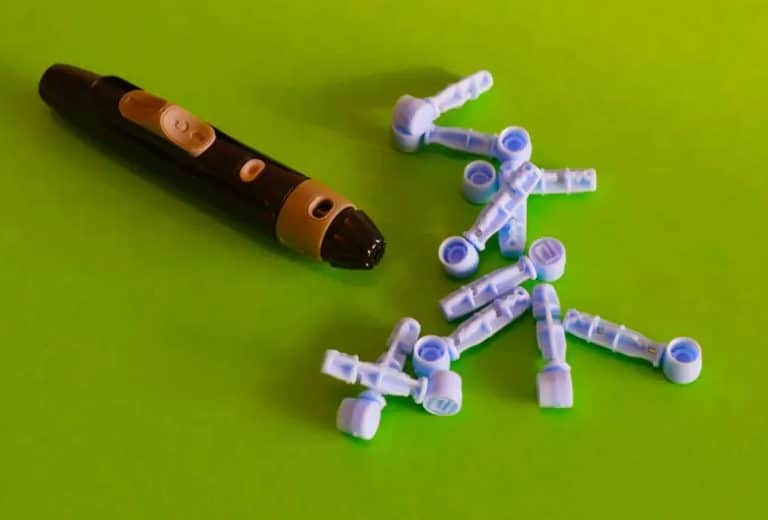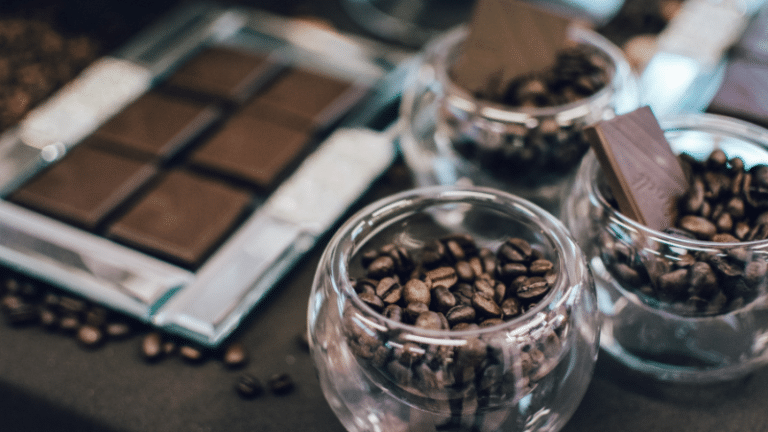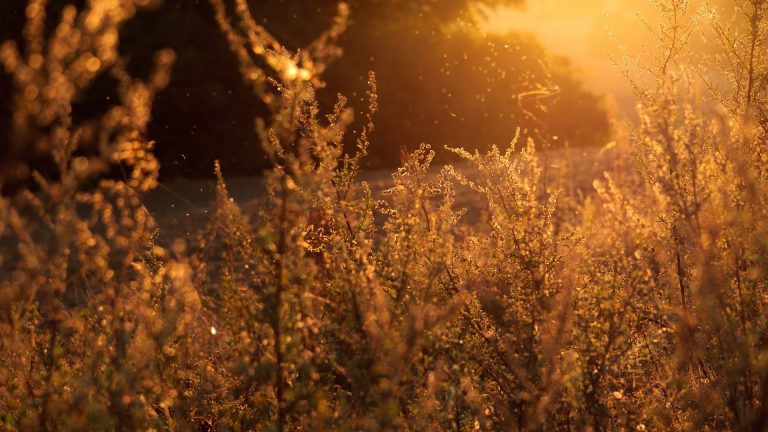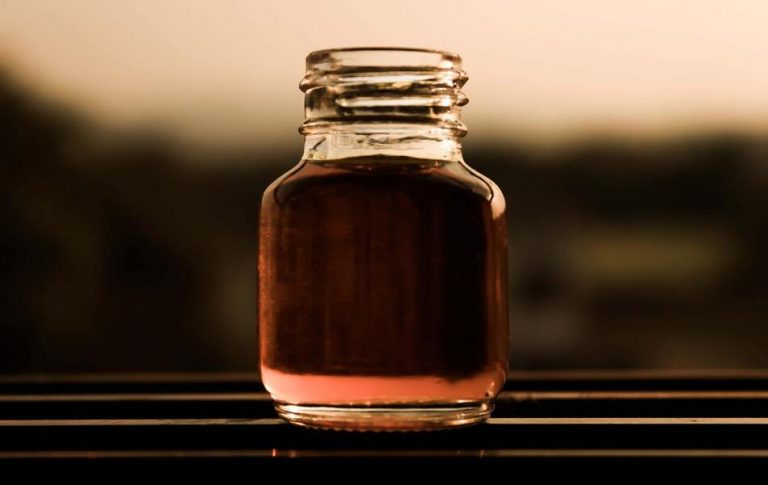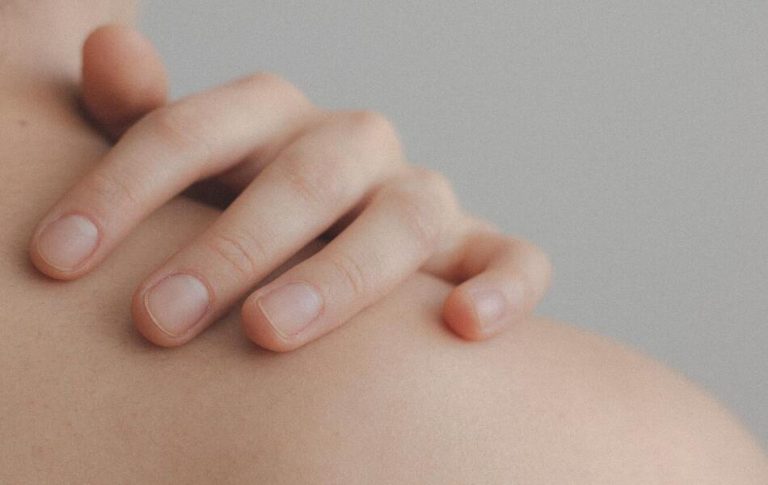How to Use Essential Oils: The Only Guide You’ll Ever Need
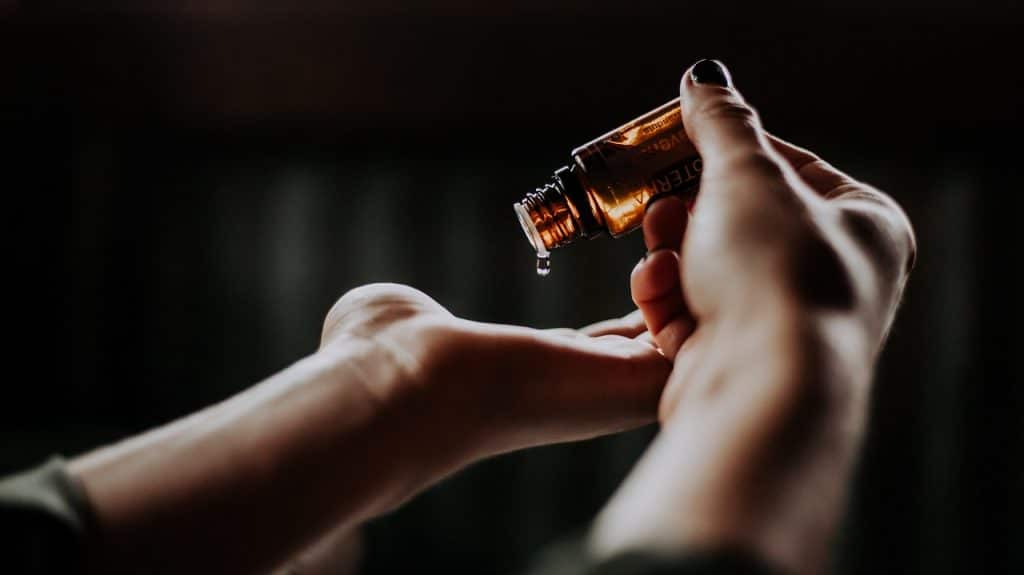
If you’re considering incorporating different essential oils into your daily routine, then you may be unsure where to begin. In short, essential oils are potent natural extracts from flowers, plant stems, and leaves. They provide a wide array of health benefits ranging from promoting healthy sleep to treating the common cold. If you want to know how to use essential oils, this article will be perfect for you. It contains everything and anything you need to know about these highly concentrated natural oils! But let’s start with the basics.
A Word of Caution
Whether you’re an aromatherapist or not, before we go on about essential oils and their uses and before you begin experimenting with different essential oils, remember that there are three rules you need to keep in mind:
- If you’re using it on your skin, do a patch test before to see whether you’re allergic.
- Do not ingest essential oils, as many of them are toxic.
- Only purchase pure oils, as these provide the health benefits you need.
There are, in fact, side effects of essential oils. And the most common ones are headaches, irritation, burning, and asthma attacks.
A Brief History of Essential Oils
What are essential oils good for? And how can humans incorporate them more into their daily routines? Indeed, humans have been asking themselves these questions since the period of Ancient Egypt. Believe it or not, the ancient Egyptians cultivated different plants for their precious oils and utilized them in cosmetics, medicine, and their religious practices. As mentioned in this article, enfleurage, the oldest technique of essential oil extraction, was first used in Egypt around 3,500 BCE.
During the same period, beneficial uses for essential oils were also discovered in India and China, eventually becoming a vital part of the Indian Ayurvedic system of medicine. Furthermore, the wisdom of the cultures in Egypt inspired the ancient Greeks, especially Hippocrates, to include essential oils in the holistic treatment of ill patients during therapies. As time went by, the Romans also took up many of these practices and started implementing aromatic baths to promote optimal physical and mental health.
Even though the Church forbade excessive or regular bathing during the Dark Ages, the different ways to use essential oils were not forgotten. In fact, people used a variety of oils to mask the stench. Luckily, aromatherapy rose to glory during the Renaissance period, and Paracelsus, an extraordinary physician, even managed to treat leprosy with the help of plant extracts.
Interestingly, the presently known term “aromatherapy” was first coined by perfumer and chemist Rene Maurice Gattefosse in 1937. Nowadays, the use of these products is growing in popularity all across the globe, as it’s a much better alternative to using products full of harmful ingredients.
Essential Oil Extraction Methods
You may be wondering, how are essential oils made? In short, professionals extract essential oils from plant materials through different removal methods that suit the section of the plant containing the precious oil. Hence, the essential oils we use today are liquids that have been isolated from plants. This way, the beneficial effects of the plant will reach the bloodstream quicker than would be possible by ingesting the plant itself.
Steam Distillation
Pure essential oils are most commonly extracted and isolated from plants through steam distillation. The steam vaporizes the plant material’s labile compounds during this process, eventually resulting in condensation and collection.
Solvent Extraction
Professionals use solvents such as ethanol and hexane to isolate the oils from the plant during solvent extraction. The perk of this method is that the final results will yield a finer fragrance than any other method of distillation.
CO2 Extraction
Some types of essential oils are extracted using CO2 as a solvent, resulting in a final product that can be used in natural perfumery and aromatherapy. Oils derived through CO2 extraction are typically thicker and give off the true aroma of the spice, plant, or herb than essential oils that have been distilled.
Other methods of creating essential oils include:
- maceration
- enfleurage
- cold-press extraction
- water distillation
The Most Popular Essential Oils and Their Benefits
1. Lavender Essential Oil
Arguably the most well-known essential oil in the wellness world is lavender, known for its distinctive relaxing floral scent. Experts claim that breathing in lavender helps alleviate headaches and calm the nervous system. Also, when applying it onto the skin, it’s known to reduce the swelling and itching from insect bites. However, some users claim to experience headaches, chills, nausea, and even vomiting when using this essential oil.
2. Rose Essential Oil
Rose oil for skin that’s prone to acne is a match made in heaven. This sweet essential oil’s antioxidant properties are well known for treating skin problems such as:
- dryness
- redness
- inflammation
Some experts even claim that rose essential oil is beneficial for alleviating pain symptoms, backed by the results of a study from 2015. Researchers found that rose oil stimulated the children’s brains to release “happy” hormones, i.e., endorphins.
3. Peppermint and Eucalyptus Essential Oils
What is eucalyptus oil good for? Also known as eucalyptus radiata essential oil, it provides comfort to tired or sore joints and muscles. Other eucalyptus oil uses may be for sharpening the mind and clearing congested nasal passages. On the other hand, peppermint essential oil is commonly used for treating irritable bowel syndrome and other digestive issues. Peppermint is excellent for digestion because it helps with pain in the GI tract, and it also relaxes those muscles.
4. Lemongrass Essential Oil
If you have hypertension or suffer from digestive issues, then using essential oils such as lemongrass will definitely do the trick. This tropical essential oil has been traditionally used to treat gastric ulcers and diarrhea and even to regulate blood sugar. And that has been one of the most crucial lemongrass oil uses.
Also, a study from 2017 conducted on individuals with rheumatoid arthritis found that the citral component in lemongrass essential oil may relieve inflammation and reduce pain. So that’s another one of the lemongrass essential oil benefits. Also, a previous study from 2015 concluded that lemongrass might be beneficial for lowering diastolic blood pressure.
5. Lemon Essential Oil
Lemon essential oil benefits include reduced anxiety levels, reduced symptoms of depression, and eliminating morning sickness. In fact, a study from 2014 conducted on pregnant women found that aromatherapy with this type of essential oil has successfully decreased vomiting and nausea levels. Not only that but lemon essential oil is known for fighting different skin conditions such as acne by eliminating infection-causing bacteria.
6. Sweet Orange Essential Oil
The most impressive sweet orange essential oil benefits include:
- reducing stress
- lifting one’s mood
- treating skin conditions
- relieving an upset stomach, and
- reducing pain
A study from 2019 conducted on mice examined the effects of sweet orange essential oil on the tiny creatures; researchers found that the mice who inhaled the sweet orange essential oil showed fewer symptoms of depression than the other mice. Also, believe it or not, the sweet orange essential oil is one of the best alternatives to cleaning the household more naturally!
7. Frankincense Essential Oil
Some benefits of essential oils include fighting certain types of cancer. In fact, one small study examined the effects of frankincense on patients with brain tumors. As it turned out, the patients who took 4.2 grams of frankincense every day experienced reduced levels of brain edema than those who took a placebo. Furthermore, frankincense essential oil is claimed to reduce symptoms of:
- PMS
- menstrual cramping
- mood swings
How to Use Essential Oils with a Diffuser
What is a diffuser? A common way to reap the benefits discussed above is by taking advantage of essential oil diffusers, devices made to disperse oils into the air. Luckily, there are a couple of different types of diffusers you can do this with. The most popular diffusers are among the following:
- electric
- ceramic
- lamp rings
- ultrasonic
- candle
- reed
How to Use Essential Oils to Scent a Room with an Ultrasonic Diffuser
1. Pick a Spot
When using an ultrasonic diffuser, start by choosing a suitable location in your office or room with a tabletop or solid surface. Special tip: when learning how to use a diffuser, make sure you keep the oil diffuser away from a fan or direct sunlight.
2. Add Water
After you’ve decided to try out essential oils for diffuser use and you have placed your oil diffuser in the right spot, fill the water tank with room temperature clean water. Make sure you don’t overfill the oil diffuser, as it might not function properly.
3. Add Essential Oils
The next step is to add the diffuser oils to clean water; you can keep it simple and use single or essential oil mixes. Typically, around six drops of oil are more than enough to scent a room, but you may need to add more if you prefer a more potent fragrance.
4. Turn on the Device
Finally, the last step to scent your room and reap the benefits is to place the top or cap of the essential oil diffuser and set the desired feature. Specific models have features such as color-changing LED lights.
How to Use Essential Oils Without a Diffuser
If you don’t own an oil diffuser and don’t want to spend the money to get one, you can use other methods. For instance, you can try the following:
- Inhale your essential oils.
- Use a cotton ball.
- Use a spray bottle.
- Try out the tissue method (just sprinkle the oil on a tissue).
- Put the oil in the dryer.
- Consider aromatherapy on the stove.
- Get a diffuser necklace.
- Put the oil in your bath.
- Try the bottle method (inhale it straight from the bottle—but keep a distance if it’s too strong!)
How to Use Essential Oils When Inhaling
Indeed, individuals suffering from a cold or an annoying cough can inhale eucalyptus essential oil, and those experiencing nausea are recommended to try out healing natural oils like peppermint. According to experts, when a person inhales an essential oil, the odor molecules go through the nasal cavity and straight to the brain through different receptor sites, such as the limbic system. In fact, the limbic system is linked to the sections of the brain that control:
- blood pressure
- memory
- hormone balance
- heart rate
So to use aromatherapy oils through inhalation, just open the bottle containing the product and inhale deeply a couple of times. Another inhalation method is steaming, for which you’ll require a towel and a bowl of hot water. Start by placing the bowl on a sturdy surface and add a couple of drops of essential oil. Next, put a towel over both your head and the bowl, and continue to inhale the steam for a few minutes. For the best results, make sure to repeat the steam method throughout your day.
How to Use Essential Oils for Aromatherapy with a Cotton Ball
One of the simplest ways to use any essential oil without a diffuser is with the help of a plain cotton ball. The only thing you need to do is select the essential oil of your choice (you can also use a blend) and put a couple of drops onto a cotton ball. Next, place the cotton ball in the vent of a fan or a floorboard. This method truly works, as the moving air will diffuse the scent as it flows through the cotton ball.
How to Use Essential Oils Topically
For starters, if you have sensitive skin prone to redness, you’ll definitely need to dilute the essential oil with a carrier oil. Carrier oils are mandatory, as essential oils on their own are volatile and highly concentrated. The most common carrier oils are:
- olive
- sunflower
- sweet almond, and
- grapeseed oil
After successfully diluting the essential oil, you can freely use it in your regular skincare routine by applying it to your favorite moisturizer or cream or consider performing a relaxing massage.
Where Do You Put Essential Oils on Your Body?
Essential oils are really easy to use, not to mention they’re very effective. There are several places you can apply essential oils to:
- the crown of your head
- your neck
- behind your ears
- your temples
- your feet
- really, any part of your body
When applying essential oils to your skin, focus on areas where you feel tension, muscular pain, or tightness. Furthermore, you can rub the liquid into pressure points such as your wrists, temples, and even the third eye.
What Essential Oils Are Good for Beginners?
When talking about skincare, the best essential oils for beginners include the following:
- helichrysum (for acne-prone skin)
- lavender (for eczema, ingrown hairs, and sunburns)
- lemon (to brighten and hydrate)
- frankincense (to heal scars)
- chamomile (for hives and dry skin)
When it comes to the best essential oils for beginners who want to perform a massage, the beginner essential oils uses chart recommends the following:
- peppermint
- lavender
- rosemary
- cedarwood
- ginger
- thyme
- geranium
- sandalwood
- black pepper
How to Use Essential Oils on the Skin When Performing a Massage
Whether you’re giving someone a massage or treating yourself, administering essential oils on the skin couldn’t be any easier. However, before application, make sure to warm the oils in the palm of your hands. If you’re about to perform a back massage, start by applying a tablespoon of your desired oil to the skin, and use long strokes to spread the liquid over the entire area. Keep in mind that ideally, you will want to spend around 30 seconds on each individual muscle group.
Useful Tips and Ideas on How to Use Essential Oils
The Right Way to Use Essential Oils When Pregnant
Let’s get to the truth of the matter: essential oils are not exclusively beneficial substances. In fact, they’re highly concentrated, and they can have harmful effects on humans if one isn’t careful enough. If you’re pregnant and still haven’t reached your second trimester, then definitely avoid essential oils.
After that period, some experts claim that essential oils such as chamomile, ylang-ylang, and lavender are safe during pregnancy, as these provide calming effects to the body and mind. Of course, consult a medical professional before trying out essential oils when pregnant or breastfeeding.
How to Use Essential Oils as Perfume
Not only are essential oils amazing as perfumes since they contain zero additives, but they’re also highly effective in helping you smell delicious and fresh. Consider creating a jasmine oil perfume (mix three drops of jasmine oil in one ounce of jojoba oil), or just dab some diluted lavender on the areas of your body you would typically apply perfume.
Also, the essential oils uses guide suggests creating your very own unisex perfume by mixing 20 drops of bergamot essential oil, five drops of cedarwood, ten drops of black pepper oil, and a drop of lavender oil. Next, mix this blend with a carrier oil such as coconut or sweet almond.
How to Use Essential Oils to Scent Laundry
The essential oils uses chart proposes that essential oils can give your laundry a fresh fragrance and are a great way to keep your clothes smelling amazing throughout the day. Start by adding a couple of drops of essential oil to your unscented laundry detergent, and continue by shaking the detergent to disperse the oil evenly.
Make sure to take a sniff and adjust the strength of the scent; add more drops of the oil if you want a more potent fragrance. If you want to make your own fabric softener, mix in around 20–30 drops of essential oil with a gallon of white vinegar.
How to Use Essential Oils for Anxiety
Indeed, various essential oils are famously known for their properties of calming the mind and alleviating symptoms of anxiety and stress. For example, many claim that you can use essential oil for stress by adding a couple of drops of valerian oil to a diffuser may make a person feel relaxed, calm, or even sleepy. Other essential oils you can try out to fight anxiety include:
- jatamansi
- lavender
- jasmine
- holy basil
- sweet basil
- bergamot
- chamomile
- rose
- vetiver
- clary sage
Another way to use these oils to relax is to dilute them and massage them into the skin.
How to Use Essential Oils for Sleep
A study from 2017 examining the effects of acupressure massage and aromatherapy on women’s sleep quality found that sleep-promoting essential oils are more effective than acupressure. According to experts, the best essential oils you need to try out if you’re having problems falling (or staying) asleep include the previously mentioned:
- lavender
- vanilla
- rose
- geranium
- jasmine
- sandalwood
- citrus
Try to add the oils to your bath or into a diffuser, or try making your own mist by making essential oil combinations with water. Then put the mixture in a spray bottle.
How to Use Essential Oils for Weight Loss
Are essential oils the secret to rapid fat loss? No, but they can help you along your fitness journey. According to experts, the best essential oils for weight loss include:
- peppermint oil
- lemon oil
- grapefruit oil
- ginger oil
- cinnamon oil
Many believe that ginger oil effectively reduces inflammation and swelling when inhaled directly from the bottle or diffused at work or home. Furthermore, cinnamon is believed to stabilize blood sugar levels and reduce cravings for sweets.
How to Use Essential Oils in the Shower
You probably already know that soaking in an aromatic bath can thoroughly detoxify your body and clear your mind, but who has the time for that? A quicker alternative is to use essential oils in the shower, and here are three ways to do it:
1. Infuse a Washcloth
Simply apply anywhere from 5 to 20 drops of essential oil to a washcloth or a cotton ball and place it on the shower floor. Then, to build steam, turn the shower to the hottest setting before adjusting it to your preferences. Keep in mind that one of the lavender essential oil benefits include relaxation, making it perfect to end the day with.
2. Infuse the Shower Wall
This method is even easier; just get a spray bottle and spray the entire inside of the shower with cold water. Next, take the essential oil of your choice and flick it on the walls. Finally, make some steam by turning on the water to the hottest temperature. One of the most popular peppermint essential oil uses include its energizing effects on the human mind, so if you need a little “pick me up,” this is the essential oil for you.
3. Apply It Directly
Start by showering like you usually do, and then turn off the water once you’ve finished washing your hair and skin. Next, grab your essential oil and gently massage it into your skin, paying extra attention to your underarms, throat, and feet. Finally, breathe in the aroma for a few minutes and rinse it off.
How to Use Essential Oils for Arthritis
People looking for relief from this condition are advised to try out a variety of essential oils, as evidence suggests they can relieve some of the symptoms of:
- swelling
- stiffness
- inflammation
- pain
If you’re suffering from osteoarthritis or rheumatoid arthritis, consider trying out eucalyptus essential oil, frankincense, or evening primrose oil. When it comes to eucalyptus essential oil, researchers recommend either adding a couple of drops to a warm bath or inhaling it directly.
How to Use Essential Oils for High Blood Pressure
Hypertension is a common illness among adults in America, and it can result in a stroke if left untreated. According to researchers, the best essential oils for this condition include:
- clary sage
- frankincense
- jasmine
- lavender
- bergamot
- sage
- valerian
- sweet marjoram
An easy way to target hypertension and take care of your skin is by making your own lotion: just mix five drops of lavender essential oil with four drops of clary sage oil, five drops of frankincense oil, and two oz. of extra virgin coconut oil. Finally, rub a small amount under your nose or into your temples.
How to Use Essential Oils for Headaches
Alarmingly, over 50% of the adult population in the world experiences headaches from time to time. Fortunately, essential oils provide a much more natural and less expensive alternative to prescription or over-the-counter medications. According to experts, the best essential oils for headaches include:
- lavender oil
- rosemary oil
- peppermint oil
- chamomile oil
- eucalyptus oil
There are several effective ways to combat headaches with essential oils, such as applying the liquid to the forehead or temples, using a compress, adding it to the bath, or inhaling it.
How to Use Essential Oils for Bed Bugs
Even though some experts believe that essential oils used as a DIY bed bug repellant may be effective, others believe that chemical or heat treatment is much better. Nevertheless, if you’re looking for a much safer way to get rid of bed bugs, then you can try out a couple of techniques, such as tea tree oil or lavender oil. To kill bed bugs with tea tree oil, you need to mix 20 drops of the oil with water and spray it on the bed bug hotspots. When the bugs’ exoskeletons absorb the oil, it suffocates them.
How to Use Essential Oils for Vaginal Candida
According to experts, the number one essential oil against candida is tea tree oil, known for its potent antifungal properties. Also, tea tree oil has been used as a skin treatment and an air-purifying agent for centuries. To create your homemade candida douche, mix two drops of lavender essential oil, two drops of tea tree oil, a tsp of raw honey, and half a cup of warm distilled water. You will also require a squeeze bottle or a douche bag. It’s recommended to use this concoction once or twice daily for a week or two.
How to Use Essential Oils for a Sore Throat
An excellent alternative to an over-the-counter medication when you’re experiencing a sore throat is essential oil. The best essential oils for a sore throat include:
- peppermint
- lavender
- echinacea
- eucalyptus
- ginger
- lemon
- thyme
- bitter orange
- tea tree
- sage oil
The most popular way to relieve a sore throat with the help of essential oils is through aromatherapy. Another way is to use it topically by mixing a couple of drops of essential oil with either sweet almond or coconut oils and applying it to the outside portion of the throat. Remember to massage it gently, so the area absorbs the oil completely.
How to Use Essential Oils for Allergies
Believe it or not, essential oils can also be used as a complementary or even alternative treatment for allergy symptoms. The best essential oils for allergies include:
- lavender
- eucalyptus
- tea tree oil
- a mixture of sandalwood
- frankincense
- ravensara oils
There are several methods to combat the symptoms of allergies with these oils. Consider diffusing them into the air, applying them diluted onto the skin, or breathing them in straight from the container. However, keep in mind that some individuals may experience even worse allergies when using eucalyptus, so always ask for expert advice.
How to Use Essential Oils for Dizziness
The sensation of dizziness and spinning, also called vertigo, can not only be treated with medication but also with essential oils such as:
- ginger oil
- lavender oil
- peppermint oil
- lemon essential oil
According to experts, the best way to use essential oils in the fight against vertigo is by either inhaling them through a diffuser or applying them topically in their diluted form. Furthermore, try to experiment with different varieties of essential oils to get your perfect match.
How to Use Essential Oils for Burns and Sunburns
If you’ve obtained a minor sunburn or burn and you don’t want to go to the store for medication, then you can always try out essential oils such as lavender or frankincense. In fact, these essential oils help burns heal faster, reduce the appearance of scars, and are also considered essential oils for pain. Experts advise purchasing 100% pure oils, which should be applied to the burns with a carrier oil such as sweet almond or coconut. Other excellent essential oils for burns include helichrysum and peppermint.
How to Use Essential Oils for Hair
Do you struggle with frizzy, dry, over-processed hair? Is your hair having trouble growing? Luckily, essential oils can also be used to promote optimal hair health. For hair growth, consider using:
- bergamot
- jojoba
- peppermint
- chamomile
- rosemary
- sage oil
To use any of these essential oils, one needs to mix a couple of drops of oil with a carrier oil such as coconut, avocado, or shea oil. Next, vigorously massage the mixture into the scalp for 2–3 minutes. Finally, for best results, leave the mixture on overnight, or rinse it off immediately.
How to Use Essential Oils for Wrinkles
Wrinkles may appear naturally as a person ages or result from harmful lifestyle habits such as drinking excessively or smoking. Even though essential oils won’t completely eliminate wrinkles and fine lines, they may significantly reduce their appearance. Consider trying out:
- lemon
- clary sage
- lavender
- carrot seed
- ylang-ylang oil
In fact, a 2015 study has shown some of the ylang ylang essential oil benefits—that ylang-ylang has strong antioxidant effects that may be beneficial for the skin’s renewal. Either apply the diluted essential oil to your face with a cotton ball or spray it from a bottle.
How to Use Essential Oils for Pets
Even though some research has shown that essential oils may be beneficial for treating health conditions in animals, the evidence remains scarce. Before trying to treat your furry companion with any of the existing essential oils, make sure to reach out to a professional for proper guidance.
Still, if you want to use essential oils on your own, then consider purchasing aromatherapy products containing pet-friendly essential oils. However, it’s necessary that you avoid the following essential oils, as they’re poisonous to both cats and dogs.
List of Essential Oils Poisonous to Cats
- citrus oil
- eucalyptus oil
- cinnamon oil
- pennyroyal oil
- pine oil
- tea tree oil
- wintergreen
- ylang ylang
The Essential Oils Poisonous to Dogs
- pennyroyal oil
- pine oil
- tea tree oil
- wintergreen
What to Do if a Pet Gets Exposed to Poisonous Essential Oils
The most common symptoms of essential oil poisoning in pets include:
- difficulty breathing
- watery eyes or nose
- panting
- vomiting
- coughing
- drooling
- low body temperature
- lethargy
- redness of the lips, skin, or gums
If you notice symptoms of poisoning after using essential oils on a pet, you need to do a couple of things before going to your emergency vet.
- Take them out into fresh air as soon as possible.
- Wash the essential oil off their skin or fur quickly.
- Do not give them activated charcoal and do not induce vomiting, as either can cause further airway obstruction or lung inflammation.
- Bring the product with you to the clinic.
Essential Oils for Stress Caused by the Pandemic
Based on much evidence, essential oils can be used to assist some of the symptoms of this collective anxiety during these troubling times. When we are exposed to various scents, such as essential oils, a chain of events begins in the nose and is carried out by the brain, the body’s control center. These biochemical processes, such as the release of hormones, can cause favorable physiological changes such as:
- relaxation
- better sleep
- improved focus
- higher energy
- reduction of pain and nausea
Lavender oil benefits involve stimulating brain areas linked to stress relief, tranquility, and physical relaxation. Ginger oil has a comparable effect on nausea, and orange oil positively impacts energy levels. Peppermint essential oil benefits involve improving focus and concentration.
When used properly, essential oils and aromatherapy can be part of a safe and successful strategy for managing symptoms including insomnia, stress, and anxiety—symptoms that are particularly bothersome when they repeatedly occur throughout weeks, months, or even years and can disrupt work, school, and everyday life. So essential oil uses give another set of safe and effective benefits, ones that can help us manage in healthy ways during this unusual moment, even if they don’t promise miracles.
Conclusion
In essence (pun intended), most essential oils are safe, but one must always be careful and dilute them before applying them topically. Hopefully, this guide on popular essential oils and their uses should help you not only discover the many benefits these precious liquids provide but also their adverse side effects. We’re always happy to help, so make sure to share this article with others.
FAQs
How do you use essential oils?
You can use essential oils in a few ways. That said, the most common one is inhaling them for both their therapeutic properties and excellent scent. Moreover, you can also use them in diffusers and humidifiers, dilute them with a carrier oil and apply them to the skin.
Where do you put essential oils?
Essential oils can be applied to most parts of our body. Even though there are many benefits of essential oils for the skin, you have to be careful if you have sensitive skin. Also, specific applications are more effective for getting the most benefits from essential oils. In fact, those areas include:
- behind the ears
- to your temples
- to the crown of your head
- to your neck
How do you use essential oils at home?
Replacing the chemicals in your home with essential oils is a very good decision. Here are a few examples:
- Lemon essential oil removes permanent markers.
- Sweet orange essential oil removes gum from carpet and hair.
- Peppermint oil is particularly good at preventing mice from entering your home.
- A drop or two of lavender essential oil on your pillow promotes better sleep.
How do you use essential oils to smell your house?
The following recipe can be used by spritzing into the air or directly on the smelly surfaces. And the recipe includes:
- a tablespoon of baking soda
- 2–3 drops of essential oil (lemon, orange, lavender, cinnamon, peppermint) drops
- distilled water
You should thoroughly mix the essential oil and baking soda. Add the mixture to an 8–12 ounce spray bottle, add the distilled water and shake.
Where to apply essential oils on the body?
Essential oils can be applied to almost any part of your body. However, for the best effects, you need to know how to use essential oils properly. To get most out of essential oils, rub some
- behind the ears
- the bottom of the feet
- on the wrists
- on the temples
- the back of the knees
- around the ankles
- the abdomen
- the side of the neck
- on problem spots
- on the chest, and
- the inner elbow

